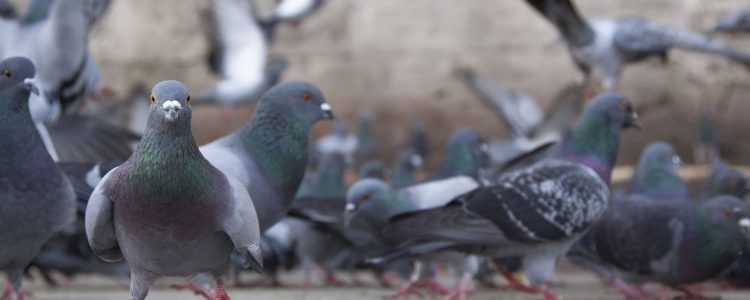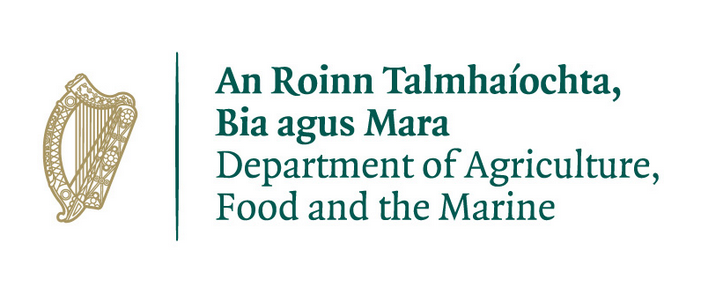
Pigeons
Adult Bird > Common Conditions > Pigeons
DISEASES
Paramyxovirus (PMV-1)
Clinical signs – watery or bloody diarrhoea, head tremor, head held upside down, loss of coordination, paralysis
Diagnosis – blood samples
Treatment –crop gavage liquid nutrition, supportive care
Comments – common. Highly contagious. Sheds for 6wks, good recovery 3 – 8wks. Isolate infected birds and all new arrivals for 10 days. Vaccinate non infected pigeons in care
Ornithosis (Chlamydophila psittaci bacteria)
Clinical signs – ocular and nasal discharge, open mouthed breathing
Diagnosis – blood test
Treatment – tetracycline
Comments – common, zoonotic; barrier nursing, isolate immediately
Avian pox – viral infection
Clinical signs –commonly dry form; brown scabbing lesions on beak, feet, wing edges or cere (fleshy swelling found on the beaks of certain birds, contains the nares)
Diagnostics – normally suspected on clinical signs
Treatment – isolation as contagious. Self limiting
Comments – mainly birds of prey, pigeons and passerines (perching / song birds) highly contagious
Canker / Frounce or Trichomoniasis – caused by flagellate protozoan; Trichomonas gallinae
Clinical signs – white, yellow or brown caseous lesions in the throat, crop, oesophagus and roof of the mouth, upper respiratory tract and eye orbits. Thick saliva, fetid smell, emaciation, respiratory distress
Diagnosis – clinical signs, examine caseous material for motile flagellates
Treatment – fluid therapy, gavage with liquid nutrition and treat with carnidazole
Comments – mainly collard doves, pigeons and birds of prey. Transmitted by direct contact.
Pigeons and collared doves should be treated prophylactically on admission
Other respiratory conditions
Air–sacculitis, rhinitis, avian tuberculosis, sinusitis
Adenovirus type 1
Clinical signs – diarrhoea, vomiting
Diagnosis –histology, cytology
Treatment – trimethoprim and ronidazole
Comments – mainly birds under 1yr of age
Aspergillosis – fungal infection
Clinical signs – weight loss, emaciation, wheezing, open mouthed breathing, fluffed up, moist rales
Diagnostics – haematology may suggest chronic infection, radiography may show opacities in the airsacs, fungal plaques seen on endoscopy
Treatment –itraconazole +/- nebulisation with clotrimazole or F10 disinfectant
Comments – mainly water birds, sea birds, birds of prey, pigeons.
Clinical signs often appear too late so prophylactic treatment of high risk species recommended.
Often triggered by stress of captivity, especially when debilitated.
NEVER use straw or hay for bedding.
Candidiasis (candida albicans fungi)
Clinical signs – thickened crop, trichomoniasis like lesions, regurgitation
Diagnosis – histology, cultures, endoscopy, clinical signs
Treatment – miconazole gel directly to the thoracic esophagus and crop twice daily for 5 days
Comments – zoonosis
Hexamitiasis (Hexamita meleagridis protozoan parasite)
Clinical signs – vomiting, diarrhoea, dehydration, smelly green watery faeces
Diagnosis – lesion scrapings
Treatment – metronidazole or ronidazole and enrofloxacin or trimethoprim
Comments – avoid interspecies mixing if possible
Pigeon Herpes Virus (PHV)
Clinical signs – sneezing, conjunctivitis, ocular/nasal discharge, caruncules
Diagnosis – serology, bacteriology
Treatment – none currently
Comments – most pigeons PHV positive
Salmonellosis or Paratyphus (Salmonella Typhimurium var. Copenhaeghen bacteria)
Clinical signs – arthritic joints, diarrhoea, lethargy, eyelid or neck abscesses
Diagnosis – faeces culture, blood samples
Treatment –strict hygiene, euthanasia of infected birds, prophylactic trimethoprim-sulfonamides, vaccination against paratyphus
Comments – lots of asymptomatic carriers makes transmission easy. Zoonosis
Coccidiosis
Clinical signs – diarrhoea, emaciation
Diagnosis – faecal sample
Treatment – sulfadimethoxine
Comments – mainly young birds. Don’t mix young and old. Many asymptomatic carriers
TRAUMA
Road traffic accidents
Clinical signs – abrasions, fractures, concussion
Diagnosis – radiography
Treatment –symptomatic. Wounds heal well with daily cleaning and intrasite gel
Comments – mainly wood pigeons, antibiotics +/- dexamethasone for concussion
Cat Attack
Clinical signs – lacerations, broken wings, puncture wounds
Diagnosis – history
Treatment –antibiotics, analgesics
Comments – mainly die due to septicaemia within 48hrs if untreated. Mainly collard doves
Shot wounds
Report to NPWS if seems suspicious
Clinical signs – fractures, wounds
Diagnostics – radiography
Treatment – treat as per normal fracture or wound but will need cleaning out as often feathers or debris will be carried into the wound
Comments – affects all bird species
Ruptured Crop
Clinical signs – either corn seed seen coming from crop, or accumulating under the skin
Diagnosis – clinical signs
Treatment – stabilise for 48hrs, antibiotics, gavage feeding. Clean and suture lining of the crop and skin over it. Long acting amoxycillin
Comments – rehydrate bird as a matter of urgency
Fractures
Clinical signs – broken leg, wing, beak
Diagnosis – radiography
Treatment – ‘colomboclip’ plastic cast, or other general fracture repair techniques. Kirschner wires and hypodermic needles – intramedullary pins
Comments – wood pigeons must be euthanized if un-releasable
PARASITES
Ectoparasites
Clinical signs – visible mites, lice, and pigeon flies, holes in feathers, ticks
Diagnosis – faecal samples, visual identification
Treatment – prophylactically with fenbendazole capsules for endoparasites, and or pyrethrum powder for ectoparasites
Comments –
OTHER
Exhausted racing pigeons – rest and food for few days
Vit D deficiency and resulting hypercalcaemia
Clinical signs – fractures, bent, soft and demineralised bones
Diagnosis – clinical signs
Treatment – reptile UV light, diet adjustment
Comments – mainly collard doves, nesting before enough sunshine for nestlings
VETERINARY CONSIDERATIONS
Fluids
Pigeons are unique in being reared initially on ‘crop milk’, a secretion of fluid filled crop cells. They are therefore able to suck up fluids unlike other birds
They can sometimes be encouraged to drink by ‘dunking’ beak into bowl
Crop gavaging is useful for debilitated pigeons if they will not suck up liquid food
(see Baby birds for gavage technique)
Convalescent food suggestions (50ml/kg/day)
Critical care formula
Hill’s a/d,
human Ensure
Prophylactic Treatment
Carnadazole, PMV vaccine, worming
(see ADULT BIRDS Veterinary Drugs and Dosages table)
